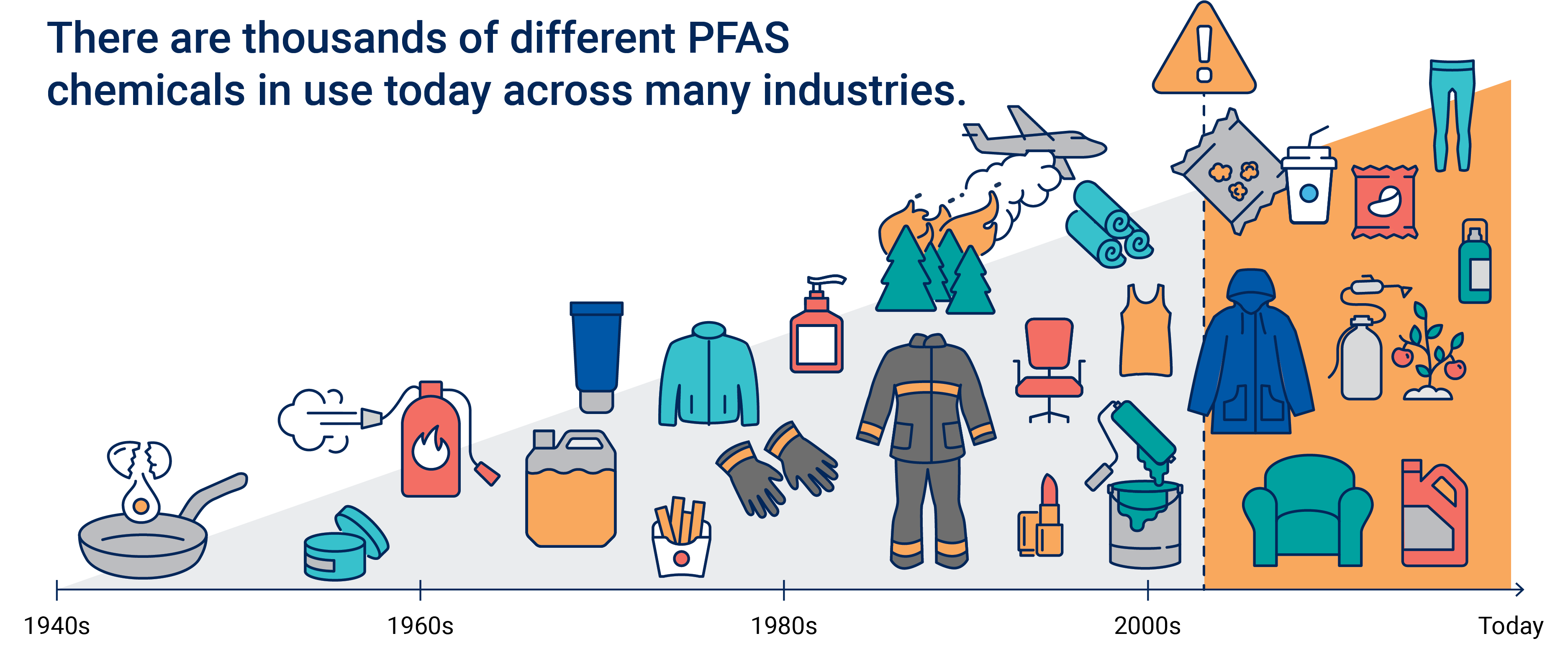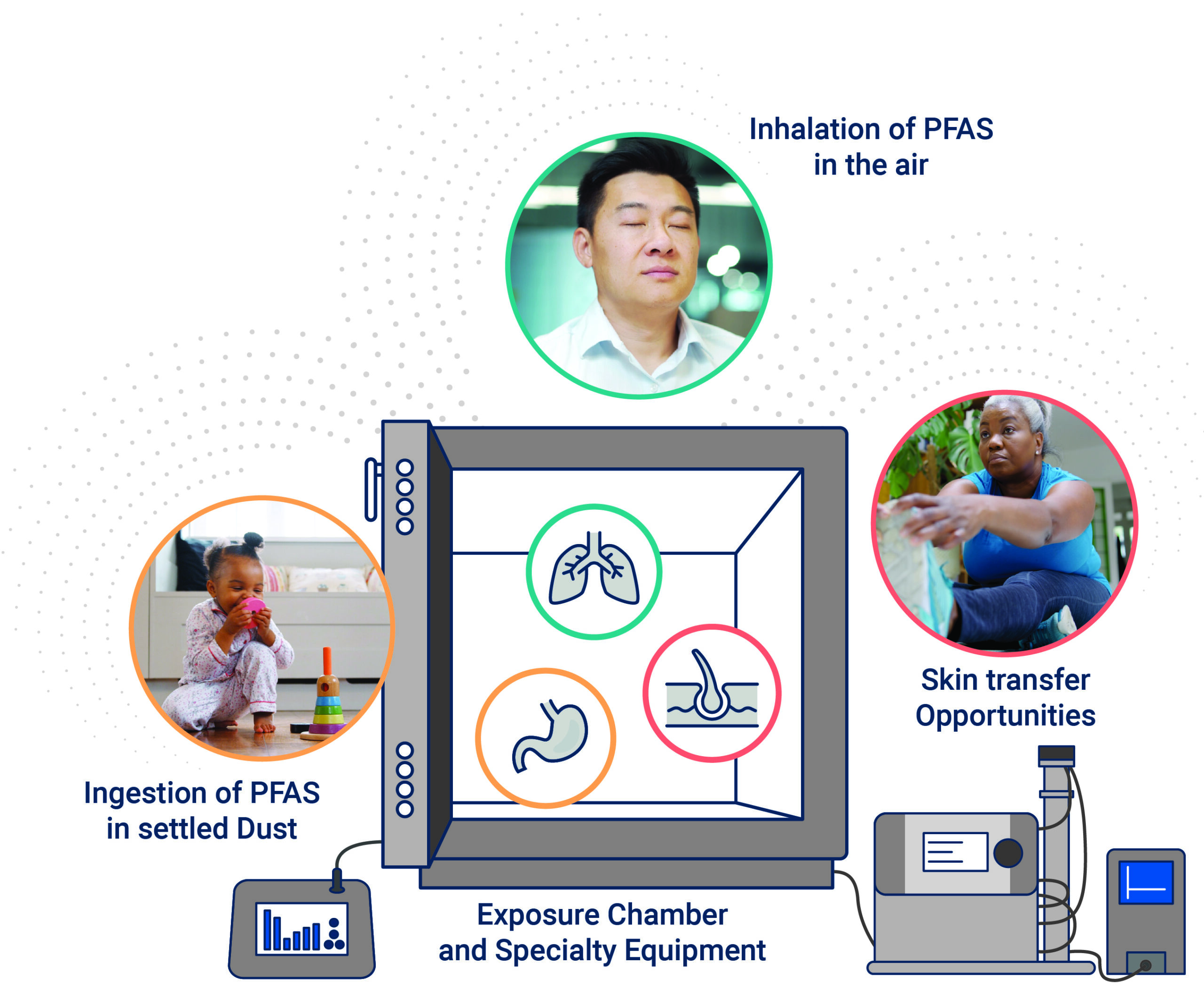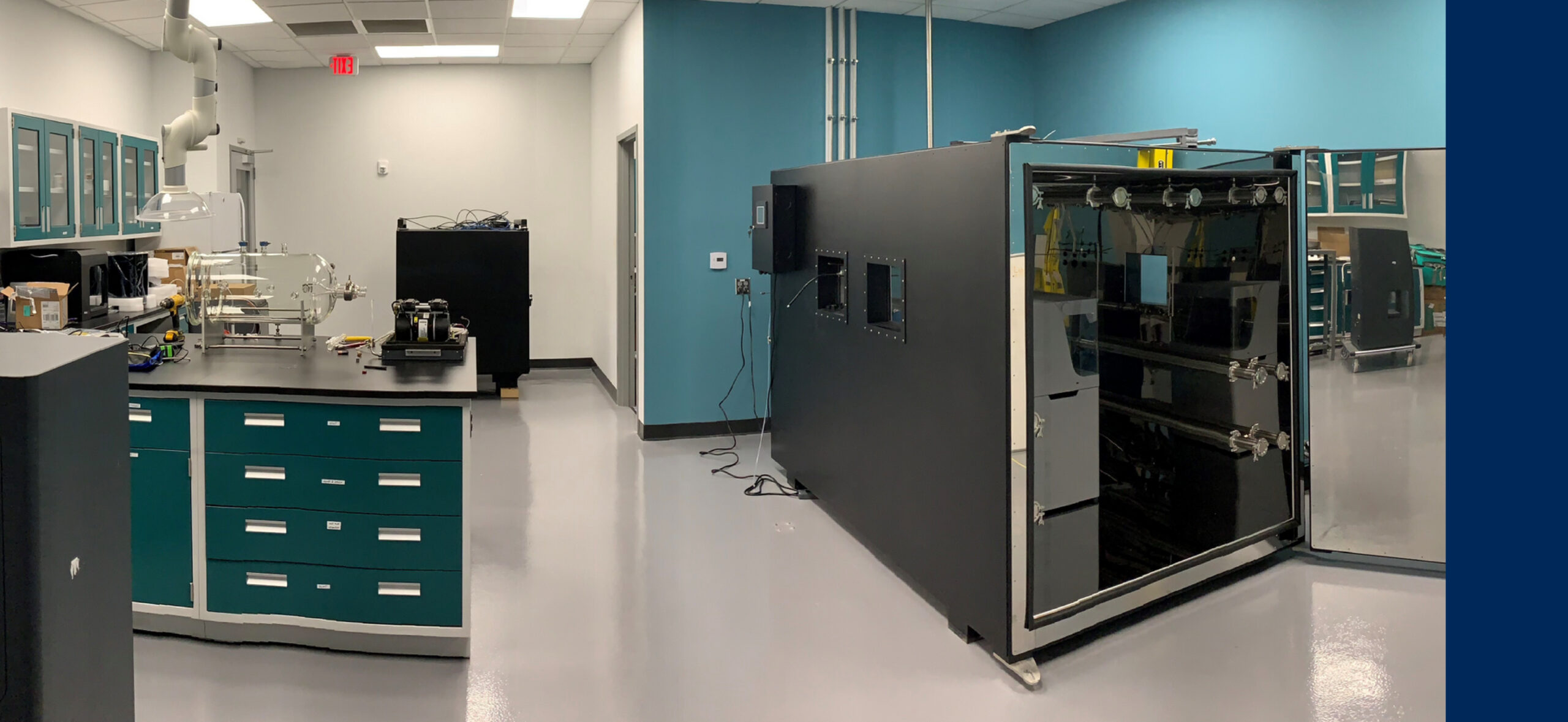

PFAS, or perfluoroalkyl and polyfluoroalkyl substances, are a group of manmade chemicals used across many facets of our lives. Since the 1940s, PFAS have been commercialized and universally valued in product manufacturing. After their initial use in non-stick and protective coatings, PFAS use spread across many sectors, including personal care products, food packaging, clothing, firefighting foam, pesticides, paints and solvents, cover textiles, and more. Health concerns about specific PFAS (such as PFOS and PFOA) have prompted manufacturers to transition to other PFAS chemicals.
The capacity to reduce flammability and heat
Resistance to impact and degradation
The ability to repel water, sweat, grease and stains
But the same properties that make PFAS so attractive for consumer and commercial use also contribute to potential exposure and human health risks. PFAS are made up of chains of carbon and fluorine atoms. The carbon-fluorine bond is arguably the strongest chemical bond in nature.
PFAS are ubiquitous environmental contaminants and are commonly known as “FOREVER CHEMICALS.”

Data show that approximately 97% of Americans have detectable levels of PFAS in their blood, but we do not fully understand how exposures occur or their potential health consequences. Limited studies have linked PFAS exposure to:

What are PFAS?
PFAS are a group of manmade chemicals used across many facets of our daily lives.
Chemical Insights Research Institute (CIRI), in partnership with Emory University’s Rollins School of Public Health, is conducting a multi-phase research study that will provide key insights into human exposure risks and toxicological outcomes from the use of certain performance textiles, including:



To conduct this research, CIRI is utilizing their state-of-the-art human exposure chambers and specialty equipment and techniques to evaluate possible exposure from use of the textiles. They are studying the potential inhalation of PFAS in the air, ingestion of PFAS in settled dust around the textile, and exposure from dermal, or skin, transfer.

Insights gained from this research will assist in understanding potential health impacts and how material design, and use, contribute to human exposure risks. And ultimately, this information may lead to strategic exposure risk reduction measures.
A methodology was developed to identify and quantify both emerging and legacy PFAS levels in consumer apparel and performance upholstery fabrics. Legacy refers to PFAS that have almost entirely been phased out of production, while emerging refers to the PFAS created to replace them. Initial data have revealed that about half of the consumer and upholstery materials selected for the study did contain various PFAS chemicals.
These materials were tested for the presence of 20 different PFAS chemicals. Of those 20 PFAS, 11 were detected in the consumer apparel samples and 5 were detected in the upholstery fabrics. Several of the PFAS found in the materials are included in recent U.S. EPA regulations enforcing maximum levels of PFAS in drinking water.
Chemical analysis data showed that the predominant PFAS across both groups of textiles was per-fluorohexanoic acid (PFHxA), an emerging PFAS. Interestingly, the PFAS detection pattern in the evaluated textiles does not fully align with the human blood levels reported, which primarily shows detection of legacy PFAS.


Specific PFAS identified and their levels varied across consumer brands. Within a given textile material, PFAS levels also varied, indicating that PFAS are not uniformly distributed within the material.
The next phase of this research will expand to include how textile use and age can lead to potential dermal exposure, skin migration, and ingestion.

PFAS Research
CIRI and Emory University's Rollins School of Public Health team to study the human health impact of PFAS chemical exposure.

Technical Briefs |
Jan 31, 2023

Science Insights |
Jan 31, 2023

Fact Sheets |
Feb 17, 2023